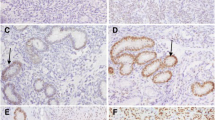Abstract
The purpose of the present study was to investigate the individual and combined effects of low levels of endotoxin and physiological levels of tumor necrosis factor on in vitro fertilization and preimplantation embryo development. B6D2F1 mice were superovulated by utilizing pregnant mare serum gonadotropin and human chorionic gonadotropin. Oocyte-cumulus complexes (3221 oocytes) were collected, pooled, and randomized into control and treatment groups. Sperm were collected from the caudae epididymides of mature male mice and allowed to capacitate. Treatments included culture media supplemented with increasing amounts of endotoxin (0.5, 1.0, and 2.0 ng/ml; sp act, 3000 IU/ng) and/or tumor necrosis factor (1, 10, and 50 pg/ml; sp act, 0.01 IU/pg) throughout the fertilization and preimplantation development process. Percentage cleavage and percentage expanded blastocyst formation were evaluated. No significant effects were observed for percentage cleavage or percentage expanded blastocyst formation in either the endotoxin (E) or the tumor necrosis factor (TNF) groups. The combination of endotoxin and tumor necrosis factor at any of the levels tested did not significantly decrease cleavage; however, percentage blastocyst formation was decreased with any combination of TNF and E (P<0.05−P<0.001). We conclude that TNF and E exert significant synergistic effects which are detrimental to in vitro preimplantation embryonic development.
Similar content being viewed by others
References
Snyman E, Van der Merwe JV: Endotoxin-polluted medium in a human in vitro fertilization program. Fertil Steril 1986; 46:273–276
Fishel S, Jackson P, Webster J, Faratian B: Endotoxins in culture medium for human in vitro fertilization. Fertil Steril 1988;49:108–111
Subias ML, Young P, Lambert H, Baccaro M, Sueldo C: Detection of endotoxin by quality control methods used in in vitro fertilization. (abstr 34) International Symposium on Gamete Physiology, Newport Beach, CA, Nov 6–10, 1988, Program Supplement, p 51
Randall GW, Gantt PA: Preimplantation murine embryos are more resistant than human embryos to bacterial endotoxins. J Vitro Fert Embryo Transfer 1990;7:280–282
Beutler B, Cerami A: Cachectin (tumor necrosis factor): A macrophage hormone governing cellular metabolism and inflammatory response. Endocrine Rev 1988;9:57–63
Hill JA, Haimovici F, Anderson DJ: Products of activated lymphocytes and macrophages inhibit mouse embryo development in vitro. J Immunol 1987;139:2250–2254
Hill JA, Haimovici F, Politch JA, Anderson DJ: Effects of soluble products of activated lymphocytes and macrophages (lymphokines and monokines) on human sperm motion parameters. Fertil Steril 1987;47:460
Eisermann J, Gast MJ, Pineda J: Tumor necrosis factor in peritoneal fluid of women undergoing laparoscopic surgery. Fertil Steril 1988;50:573–579
Witkin SS, Liu HC, Davis OK, Rosenwaks Z: Tumor necrosis factor (TNF) is present in maternal sera and embryo culture fluids during in vitro fertilization. J Reprod Immunol 1991;19:85–93
Rothstein JL, Schreiber H: Synergy between tumor necrosis factor and bacterial products causes hemorrhagic necrosis and lethal shock in normal mice. Proc Natl Acad Sci USA 1988;85:607–611
Dandekar PV, Quigley MM: Laboratory setup for human in vitro fertilization. Fertil Steril 1984;42:1–11
Montoro L, Subias E, Young P, Baccaro M, Swanson J, Sueldo C: Detection of endotoxin in human in vitro fertilization by the zona-free mouse embryo assay. 1990;54:109–112
Author information
Authors and Affiliations
Rights and permissions
About this article
Cite this article
Randall, G.W., O'connor, E.F. & Gantt, P.A. Synergy between tumor necrosis factor and endotoxin decreases early embryo development in vitro. J Assist Reprod Genet 8, 304–307 (1991). https://doi.org/10.1007/BF01133018
Received:
Accepted:
Issue Date:
DOI: https://doi.org/10.1007/BF01133018




